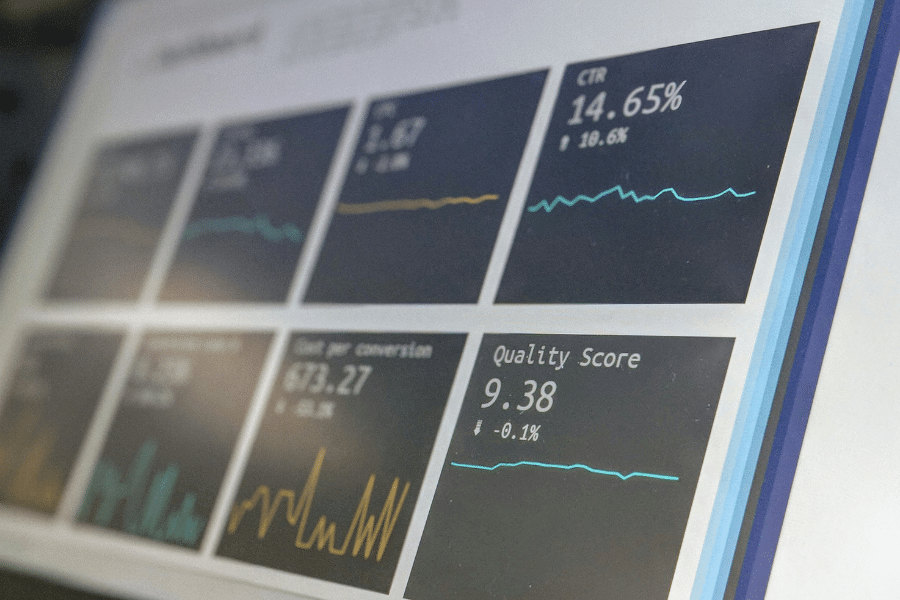Related Resources
Data analytics is revolutionizing the way internal auditors and risk management professionals approach their day-to-day roles. It’s a game-changer not just for examining compliance but for proactively identifying emerging risks before they impact business resilience. With the landscape of risk rapidly changing in 2025—marked by evolving regulations, advanced technologies, and unprecedented global challenges—data analytics serves as an invaluable tool for navigating these complexities.
This post explores how data analytics supports auditors in identifying emerging risks, highlights current trends, and sheds light on how organizations can strategically leverage these insights to stay ahead.
The Growing Role of Data Analytics in Compliance and Risk Management
Collating and analyzing massive amounts of data is now integral to auditing, compliance, and risk management. Traditionally, internal auditors relied on sampling methods to evaluate controls and identify anomalies. While effective to some extent, these methods often left room for blind spots and unidentified vulnerabilities. Enter data analytics—a modern approach that allows auditors to analyze entire datasets instead of only a sample, providing a much more comprehensive view of risk areas.
Identifying Patterns and Predicting Risks
Data analytics enables internal auditors to:
- ol]:!pt-0 [&>ol]:!pb-0 [&>ul]:!pt-0 [&>ul]:!pb-0″ value=”2″>Predict risks based on historical trends, enabling proactive rather than reactive measures. For example, predictive analytics in procurement data could identify vendors prone to delivering substandard materials.
- Enhancing Compliance Monitoring
By automating compliance checks and analyzing transaction data, auditors can efficiently detect regulatory breaches.
Compliance is one of the key areas benefiting from advanced data analytics. By automating compliance checks and analyzing transaction data, auditors can efficiently detect regulatory breaches. Analytics dashboards equipped with key risk indicators (KRIs) offer continuous monitoring capabilities, reducing the chance of oversight while ensuring that organizations meet their regulatory obligations.
Example in Practice: Take anti-money laundering (AML) compliance, a sector inundated with evolving requirements. Banks and financial institutions use data-driven tools like machine learning models that comb through transactional data to flag suspicious deposits or transfers, reducing human error and ensuring timely reporting.

Saving Time While Increasing Accuracy
Modern auditing tools powered by data analytics streamline processes that previously relied on manual checks. For instance, anomaly detection algorithms can scan thousands of financial statements in minutes, highlighting outliers for further review. This not only saves auditors valuable time but also bolsters the accuracy and reliability of the results.
Trends Driving Data Analytics in Internal Auditing (2025 and Beyond)
The landscape of risk management and compliance in 2025 is dynamic, driven by several key trends. Below are some of the major movements shaping the field of internal auditing through the lens of data analytics.
Advanced Machine Learning Models
Machine learning (ML) continues to lead the charge in providing auditors with actionable insights. These algorithms learn and adapt over time, becoming better at identifying risks as more data is analyzed. For instance, a machine learning model designed to detect cybersecurity threats might analyze employee behaviour, pinpointing unusual log-in locations or failed access attempts.
The same models can improve anomaly detection over time—distinguishing between genuinely fraudulent activity versus coincidental outliers (e.g., duplicate invoices with valid corrections).
Integration of Blockchain Analytics
Blockchain technology brings unparalleled transparency by creating immutable records of transactions. Audit professionals are now combining blockchain data with analytics platforms to ensure traceable, tamper-proof records. Blockchain analytics enhances fraud prevention, particularly in industries like supply chain or cryptocurrency trading, where transparency is critical.
Increasing Adoption of Real-Time Monitoring
Organizations increasingly prioritize real-time monitoring, allowing them to mitigate risks as they emerge rather than after damage has occurred. Sensors, Internet of Things (IoT) devices, and operational data feeds are being directly integrated into systems that provide real-time risk analytics dashboards. This trend not only minimizes vulnerabilities but also improves crisis response times.
Focus on ESG Compliance
Environmental, Social, and Governance (ESG) metrics have become a core area of focus for auditors. Using data analytics, firms assess environmental impact, employee satisfaction, and governance compliance, ensuring alignment with global ESG standards. For example, using analytics to monitor supplier labour practices can help manage supply chain risk while maintaining ethical compliance.
Regulation and AI Ethics
Ensuring the ethical use of AI in auditing processes is another trend for 2025. Regulatory guidance is emerging globally to define acceptable uses of algorithmic decision-making in business processes. Auditors must carefully evaluate the outputs of AI-driven analytics to ensure they align with both ethical and regulatory guidelines.
Building a Data-Driven Auditing Function
Leveraging analytics effectively requires organizations to build a fully data-enabled auditing function. Below are the steps to achieving this.
1. Invest in the Right Technology
Deploy powerful analytics software that can support predictive models, data visualization, and full-dataset evaluation. Tools like ACL Analytics or IDEA Excel Analytics are widely used in auditing for their powerful data processing capabilities.
2. Create Data Governance Frameworks
Structured frameworks ensure that data is consistent, reliable, and secure. From handling personal information subject to GDPR to ensuring data portability, frameworks guarantee the trustworthiness of analytical results.
3. Train Auditors in Data Skills
Many organizations are now prioritizing data literacy for their auditing teams. Through certifications or in-house training programs, auditors need the skills to interpret data visualizations, understand algorithms, and question machine learning insights.
4. Develop Cross-Functional Collaboration
Data-driven audits require collaboration between departments—especially IT and internal audit teams. IT provides the security and infrastructure for analytics tools, while auditors provide interpretation expertise to translate data findings into actionable insights.
5. Monitor and Refine Analytics Strategies
Ensure that data use remains dynamic by regularly updating analytics models. Emerging risks could demand new approaches or adjustments to how data is gathered and processed.
Challenges to Be Aware of
With the benefits of integrating data analytics into auditing processes come some challenges. These include:
- Data Silos: Fragmented data stored across different systems can prevent auditors from having a complete picture. Consolidating data remains critical.
- Overreliance on Algorithms: Mistaking algorithmic output for complete accuracy can lead to missed nuances. While analytics is a major advantage, human oversight remains vital.
- Data Privacy Concerns: Auditors must adhere to privacy regulations, especially when handling sensitive data such as customer or employee information. Strong practices like anonymization are essential.
Data Analytics as a Catalyst for Change
The shift toward the widespread use of data analytics in internal auditing and compliance has positioned forward-looking enterprises for long-term stability. While risks evolve—whether regulatory, environmental, or digital—analytics provides the tools needed to identify and surface these challenges early, paving the way for organizations to act with foresight rather than hindsight.
By adopting advanced machine learning models, leveraging tools for ESG compliance, and moving toward seamless integration of real-time monitoring, organizations won’t just adapt; they’ll thrive in the face of new risks.
For internal auditors, compliance officers, and risk managers, becoming proficient in data analytics is no longer optional. It’s the bridge toward a more proactive, informed, and agile approach to managing risk in 2025 and beyond.
Questions? Contact Bronson.AI today.





